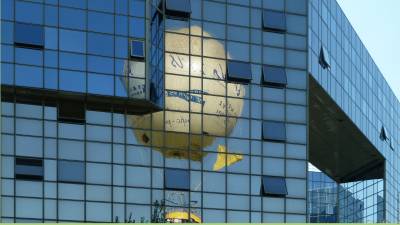Second InterFrost meeting held in Paris, 9-10 April 2015
The meeting program is to be found here finalprograminterfrost2015.pdf, access to the venue getting_here_cea-le_ponant_d.pdf and a list of hôtels paris-hotels-5th-arrondissement.pdf
The main results of the inter-comparison with the preliminary results were presented by C. Grenier at the 2015 EGU meeting in Vienna (Permafrost Open Session): interfrost_results_at_egu2015.pdf
The inter-comparison results and points discussed during our April InterFrost meeting are all included in the C. Grenier presentation grenier_interfrostresults_discussions.pdf
The participant presentations are all to be found here (participant access).
This one day and a half meeting gathered 17 participants at Le Ponant CEA building on the 9th and Ecole des Mines venue on the 10th. The main points were:
- Present and discuss the TH2 and TH3 results,
- Discuss and understand these first inter-comparison results,
- Present the stand of the experiments at GEOPS (pressure increase test and frozen inclusion case related with TH2),
- Discuss future tasks,
- Funding issues.
Concerning the inter-comparison results, it seemed that a consensus could be built around “the solution” because simulation results tend to be grouped while other more scattered results, it seemed, could be explained by some 1°) differences in the interpretation of the information provided or 2°) lack of convergence of the results requiring refined simulations (addressing time and space discretization issues). We agreed to double check our parameters. Some other discrepancies probably result from differing equations. One source of discrepancies was identified in the “simplification” of the expression of the hydraulic conductivity involving indeed porosity. Please double check the expression from the parameter sheet.
Performance measures involving large volume averaging provided a smaller range of discrepancies as was expected from convergence simulations. Others are very sensitive to temporal or spatial convergence, including total heat flux involving surface averaging. The variety of Performance Measures should help us to understand discrepancies in the results.
According with the discussions, the following actions should be undertaken:
- Double check should be done to be sure of the cases ran are what is required from the parameter sheets.
- If possible make convergence tests (vary time increments and/or spatial meshing towards refinement and study the convergence of the results in terms of Performance measures).
- Provide mathematical expressions for Performance Measures to be clearly defined.
- Plan complementary performance measures, especially for TH3 for which punctual measures are lacking. For instance consider the temperature time evolution at some identified locations (e.g. in the middle of the domain). For this TH3 case, participants suggested that the 0% gradient case was not interested and should be removed from the list of gradients.
No plan was made for a future meeting. Our main focus this year will be to write a common paper on the TH2 and TH3 inter-comparison exercise. The schedule is then for all teams to 1°) provide their definitive results by the 30th of June, 2°) work on a common paper together within a prepared draft (formerly prepared by two or three people) from the summer on. The paper should be submitted by the end of 2015 the latest. The next meeting date and content will then be planned based on some parallel preparation of some identified future tasks: 1. Experimental cases (pressure increase and frozen inclusion). 2. Real cases (e.g. North Québec, Siberia, a simplified lake system). 3. Non-saturated TH cases, starting from a reassessment of existing laboratory experiments and associated processes representation. 4. Revive the T2 Case dealing with the evolution of permafrost depths during geological time scales. This point leads to a reassessment of the sensitivity of simulations to the time step for highly variable temperature input signals. 5. Consider large scale studies. This points at the limits of the simulations considering coarse grids.
Action List
- Provide proceedings of April meeting with action list, participant list and participant presentations on the web site (CG)
- Provide mathematical expressions for some unclearly defined performance measures (CG on the web site and appended document complementing the parameter sheet)
- Introduce some complementary performance measures for TH2 and TH3 (same)
- Introduce a new performance measure for TH3 (point evolution of temperature, see Fig. 1) – refer to the complement to the TH2 and TH3 parameter sheets (th2_3_parameter_sheet_complement.pdf).
- Provide all code questionnaires on the web site to track the origins of discrepancies in the results or understand the performances of our codes (participant pages, click on the name of the code, participant access only).
- Provide all TH2 and TH3 results by June 30th (all participants). Please provide for each performance measure and head gradient an ascii file with two columns (time (s);Performance Measure), separator “;” with names TH2_PMi_GHj and TH3_PMi_GHj
Important points of schedule are that all definitive results are to be provided by the 30th of June 2015. The draft of a common paper will then be provided to the participants in summer for common redaction until the final submission by the end of 2015
